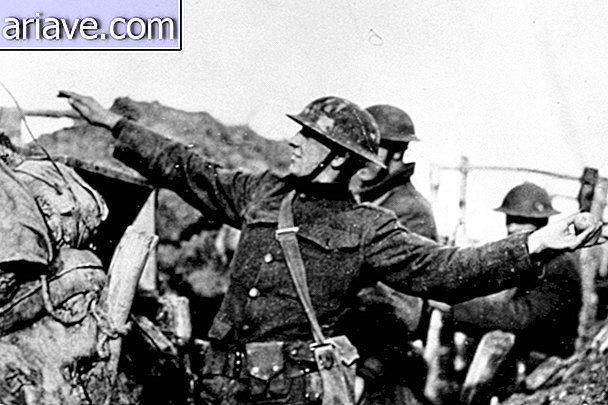Next Stop: Germany: Get Ready to See This Majestic Country
Today is Next Stop Day and we bring here in Mega Curioso another special article with details of a very famous and well known country, at least for most people through books: Germany. With many historical twists, stunning landscapes, century-old castles, modern cities and a culturally rich people, we find in Germanic lands plenty to see, talk and discover. Pack your bags and embark with us on this tour of another European country.
A brief historical summary
Germany has been home to several Germanic peoples over the centuries, which later unified and formed the country - more specifically in 1871, due to the Franco-Prussian War. The territory came under the rule of the Holy Roman Empire until 1806, and during the 16th century the north became the true epicenter of the Protestant Reformation, which adapted some concepts of Catholicism and spread to other European countries (and later to other continents).
Germany participated in the two Great Wars the world suffered (both of which had European territory as their main scenario). Unfortunately, the country became well known worldwide due to the leader of the Nazi Party and Third Reich, Adolf Hitler, who implemented policies that improved the country in economic terms but were also responsible for the country's atrocities - such as the Holocaust.
Capitalism and Socialism side by side
After the end of World War II, German territory was divided into two states: West Germany and East Germany - with major economic and political differences between them (capitalism versus socialism). East Germany came under the strong socialist regime, while the adjacent state was divided between the victorious powers of World War II - France, England and the United States.
After the fall of the Berlin Wall in 1989, Germany was reunified and again became the territory we know today. We mention here few historical facts (and in a nutshell), as the country is the holder of several changes that have occurred over the years that have politically and culturally transformed German territory. However, let's take a closer look at what the country looks like today and what places you can visit and find out below.
The plurality of the capital Berlin

Germany has over 81 million inhabitants (it is the second most populous country in Europe), and its capital, Berlin, is the largest city with 3.4 million people. With buildings that blend the modern with the historical, this urban center is known for being diverse not only in its constructions, but with people as well (there are thousands of immigrants living in the German capital). To see a panoramic image of the city, click here.
Among the city's famous sights, you can see the remains of the Berlin Wall, the Brandenburg Gate (which you see in the picture above), the Reichstag Palace (German Parliament), the many museums in the capital and many others. options. If you want to travel inland Germany, there are many other beautiful, historic and modern cities to visit, such as Hamburg, Frankfurt, Munich, Cologne and more.

Below you can see images of the monorail of Wuppertal, city of western Germany. This curious transport system, called the Wuppertaler Schwebebahn, was implemented in 1901, whose lines cross various parts of the city eight meters in altitude - an inverted monorail. This suspended train, by itself, already considered a type of tourist attraction of the city.



The beautiful German castles
Like many countries in Europe, German territory is full of centuries-old castles. One of the most famous is the Neuschwanstein. The building is well known for being Disney's inspiration for the creation of the “Sleeping Beauty” castle - an image that later became consolidated as the “Disney Castle”, which we always see in the openings of studio films.

Another quite famous castle is Hohenzollern Castle, located on a high hill in Germany. It has been through three buildings as it has been destroyed and rebuilt twice. To be aware, it was erected in the 11th century over 900 years ago (!), Long before Brazil was even colonized. In the 90's, the site underwent restoration works and today is one of the main tourist attractions in the country.


In addition to these two beautiful castles, we highlight Schwerin Castle, considered one of the most romantic in Germany. It was built on the shores of an island on Lake Schwerin. Of course there are many other impressive castles in Germany, but we can't list them all here (there are over 300 locations).


Personalities born in Germany
Several important people who influenced the world in many ways were born on German territory. Perhaps most important of all is physicist Albert Einstein, who has put forward numerous theories, formulas, and mathematical concepts that have shaped the thinking of the modern world. In the literary field, we can list Johann Wolfgang von Goethe, writer considered one of the most important figures of German literature and the equally important philosopher Nietzche.

Jacob and Wilhelm Grim, popularly known as the Grimm Brothers, were also German, considered responsible for unifying various folk tales and children's fables, disseminating these works to the world. In the music field there are great German composers such as Beethoven, Schumann, Bach, Wagner, Strauss and Handel.
There are also other famous and extremely influential German personalities like Kant, Robert Koch and Gottlieb Daimle. Currently, we can list some recent idols, such as Formula 1 driver Michael Schummacher and soccer player Michael Ballack.
Culinary habits and German drinks
German cuisine varies greatly from region to region, but there are some famous dishes that are known all over the country (and here in Brazil too, depending on the cities). Sausages are quite common, usually stuffed, sliced and eaten with bread - and there is a fairly wide variety of sausages to suit all tastes. Among the dishes, we can mention Sauerkrau (mixed vegetables), Spargel (asparagus with pork) and Weisswurst (pale sausage).

As for the drink, it is known that the Germans drink a lot of alcohol. Although wine is very popular in many cities, beer is considered the national drink - with one of the largest consumptions per person per year, reaching 116 liters. No wonder one of the most traditional brewer events takes place in German territory, Oktoberfest (with the Brazilian version, which takes place in Blumenau / SC), characterized by several other festivities.

Another curiosity is that water as we have here in Brazil, sold in bottles, is rather rare. It is much easier to find sparkling water there than still water - the opposite here.
Curiosities in general
- Germany, in German, is Deutschland;
- The most popular surname in Germany is Müeller (equivalent to our Silva);
- There are over 300 types of bread in the country;
- There are over 35 German dialects that are spoken in various regions of the country;
- German is the official language of five countries: Germany, Switzerland, Austria, Luxembourg and Liechtenstein;
- Cologne Cathedral took more than 600 years to build;

- The tallest cathedral in the world is located in the city of Ulm (where Einstein was born);
- Europe's largest train station is in Berlin;
- There are over 150 castles in Germany;
- The tradition of the Christmas tree originated with the Germans;
- The Germans are also football fans (the sport is the most popular in the country), and they hosted the 2006 World Cup;
- There are more football clubs in Germany than any other country in the world;
- Autobahns are special German roads that have no speed limit;
- Germany is the largest economy in Europe.
Of course there is a lot of other interesting information about this impressive country. If you know more curious aspects of Germany, be sure to share with us in the comments.











